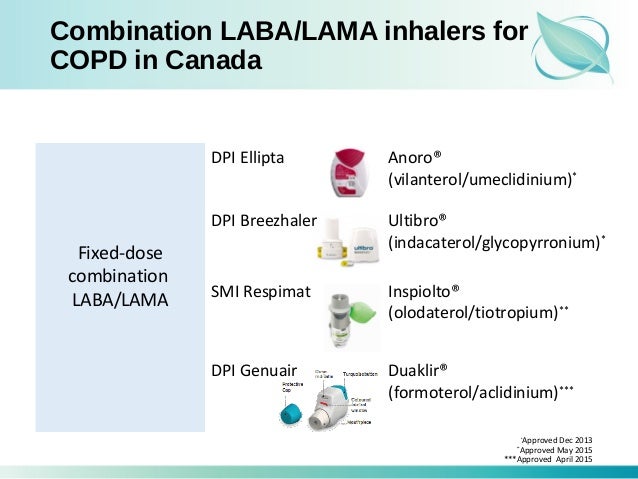

See MHRA Drug Safety Alert July 2018 for further details. To prevent objects entering the mouthpiece during storage, the mouthpiece cover should be replaced securely after use. When prescribing a pressurised MDI, remind patients to check and remove the mouthpiece cover fully, shake the inhaler to remove loose objects that may not be visible, and check the inside and outside of the mouthpiece are clear before inhaling a dose. PMDI = Pressurised metered dose inhaler DPI = Dry powder inhaler SMI = Soft mist inhaler BDP = Beclometasone dipropionate
Anoro laba lama how to#
NICE has produced a patient decision aid to help people with asthma and their healthcare professionals discuss their options for inhaler devices (available here) it is suitable for use by people aged 17 years and over, and many of the considerations are also applicable to patients with COPD.Īdvice on how to obtain placebo inhalers can be obtained from the NHS Devon ICB Medicines Optimisation Team, please contact: information on inhaled corticosteroid dose comparisons in asthma see here When discussing inhaled treatment options, consideration should also be given to the environmental impact of inhalers.

Adherence to treatment regimens should also be checked.

It is essential that patients can demonstrate the proper inhaler technique when prescribing an inhaler device recheck patient technique at each visit to ensure continued correct use of the inhaler. Patient preference should be considered when prescribing treatments. Prior to prescribing, the relevant Summary of Product Characteristics (SPC) should be checked. Generic prescribing of inhalers should be avoided as this might lead to patients being given an unfamiliar inhaler device which they are not able to use properly in addition, not all inhalers with the same primary ingredient are interchangeable due to differences in particle size.ĭifferent products and doses are licensed for different age groups and some may be applicable only to older children or adults (aged 18 years and over). Anoro Ellipta Summary of Product Characteristics, May 2014.All combination inhalers included in the formulary are included as branded products.Other commonly reported adverse effects included UTI, sinusitis, pharyngitis, upper respiratory tract infection, headache, cough, oropharyngeal pain, constipation and dry mouth. The most frequently reported adverse effect in patients receiving vilanterol/umeclidinium was nasopharyngitis. 1ĬOPD exacerbations were reduced by 50% with vilanterol/umeclidinium compared with placebo (HR 0.5, p=0.004), by 20% compared with umeclidinium (HR 0.8, p=0.391) and by 30% compared with vilanterol (HR 0.7, p=0.121). Similar outcomes were also observed with placebo and umeclidinium montherapy. Three six-month trials (total n=1747) showed that vilanterol/umeclidinium reduced the use of rescue medication compared with tiotropium. George’s Respiratory Questionnaire compared with tiotropium monotherapy. In one of the three comparator studies, the combination was associated with a statistically significant reduction in total score on the St. Improvements relating to health-related quality of life were also observed for vilanterol/umeclidinium in clinical studies.

1Īt week 24, a clinically meaningful increase in transition dyspnoea index (TDI) focal score (key secondary endpoint) was observed with vilanterol/umeclidinium compared with placebo (p<0.001). Vilanterol/umeclidinium was also shown to produce significantly greater improvements in lung function than tiotropium in two of three six-month active comparator studies (n=905, p<0.001 and n=410, p<0.001) and numerically greater improvements in the third (n=432, p=0.018). In one six-month study (n=1,532) significant improvements in lung function (as defined by change from baseline in trough FEV 1) at week 24 were observed for vilanterol/umeclidinium compared with placebo (p<0.001) and with each monotherapy treatment arm (p<0.001 vs vilanterol, p=0.004 vs umeclidinium). The clinical efficacy of once-daily vilanterol/umeclidinium was evaluated in eight phase III studies involving 6,835 adults with COPD. Its bronchodilatory action is complemented by that of umeclidinium, a long-acting muscarinic receptor antagonist (LAMA) which exerts its effects by competitively inhibiting the binding of acetylcholine to muscarinic receptors on airway smooth muscle. Vilanterol is a long-acting beta 2 agonist (LABA).


 0 kommentar(er)
0 kommentar(er)
